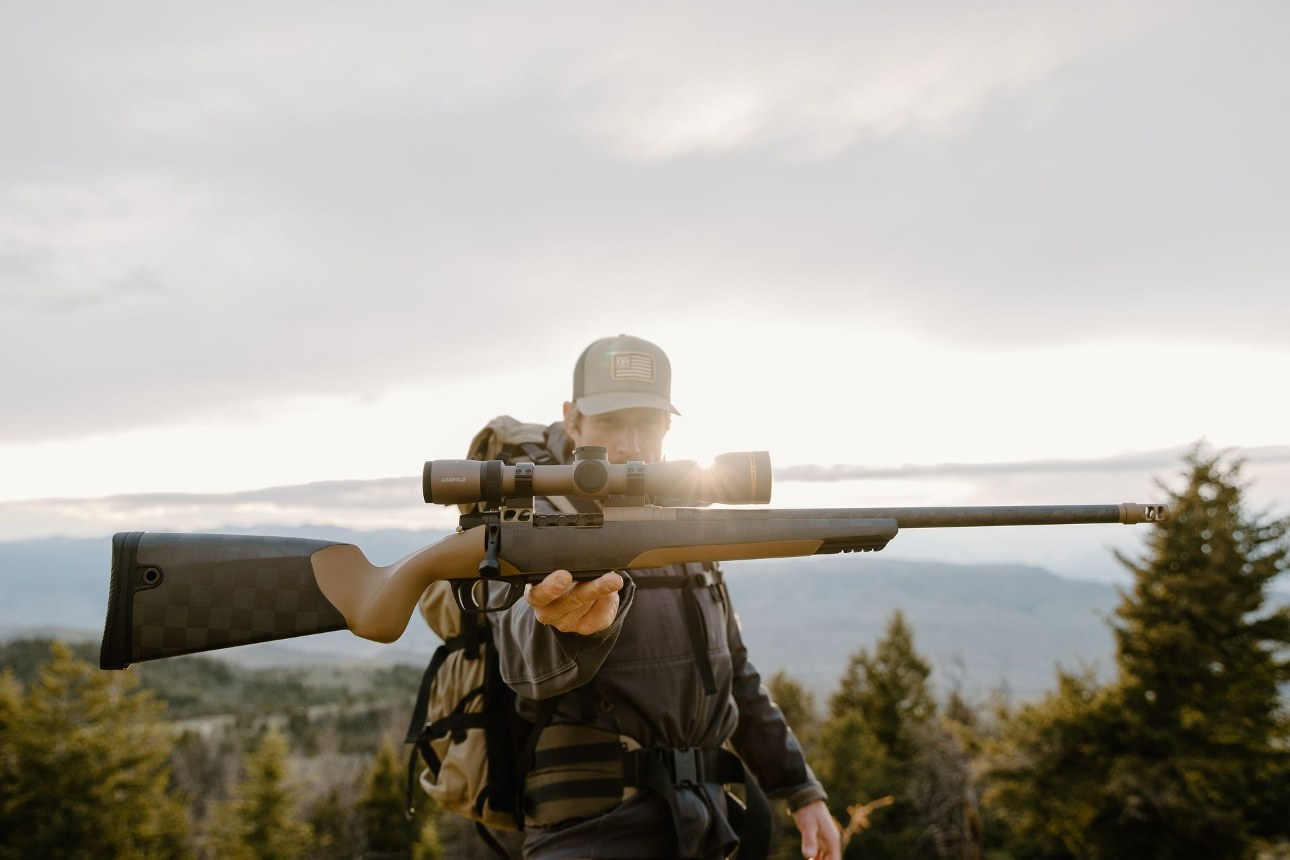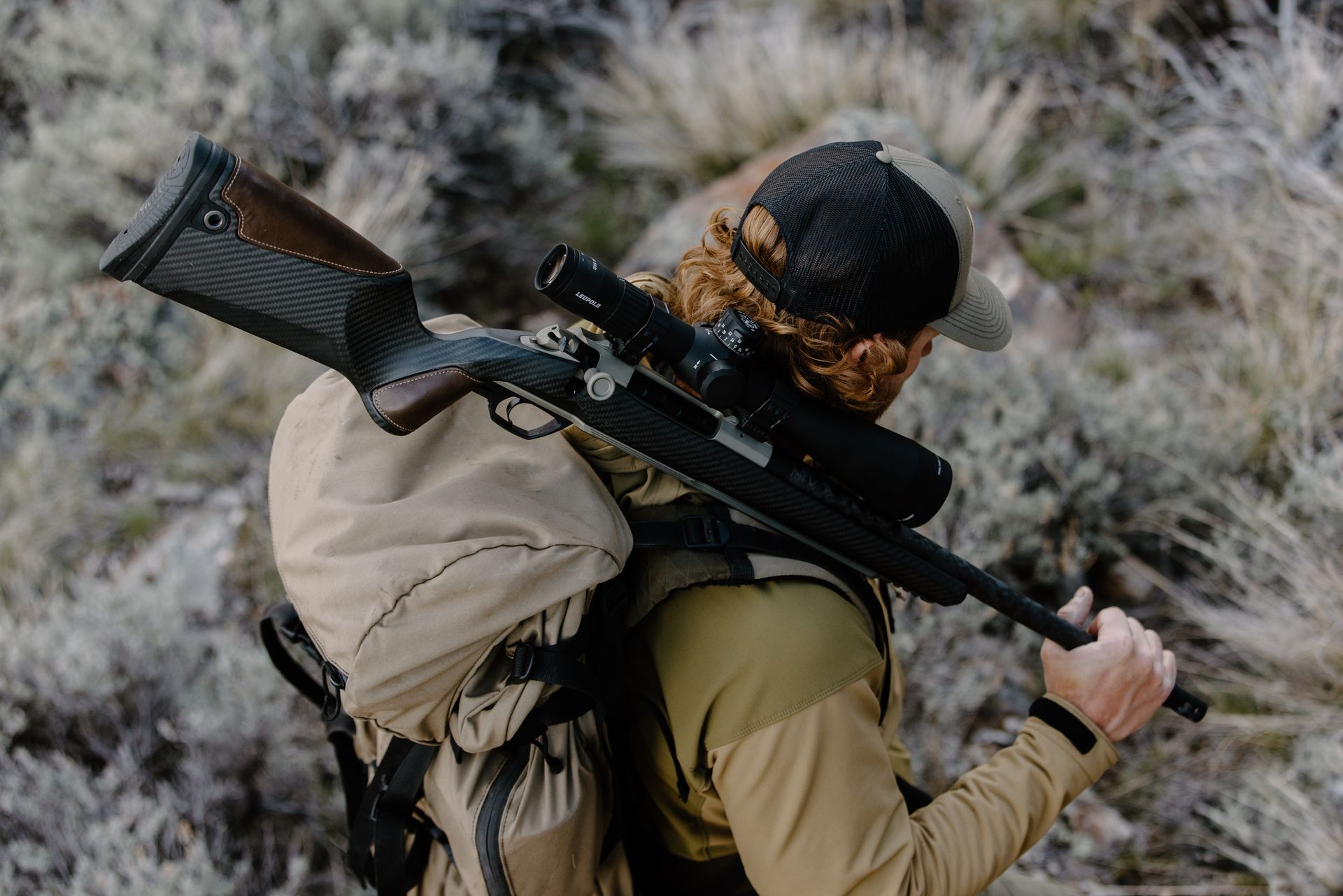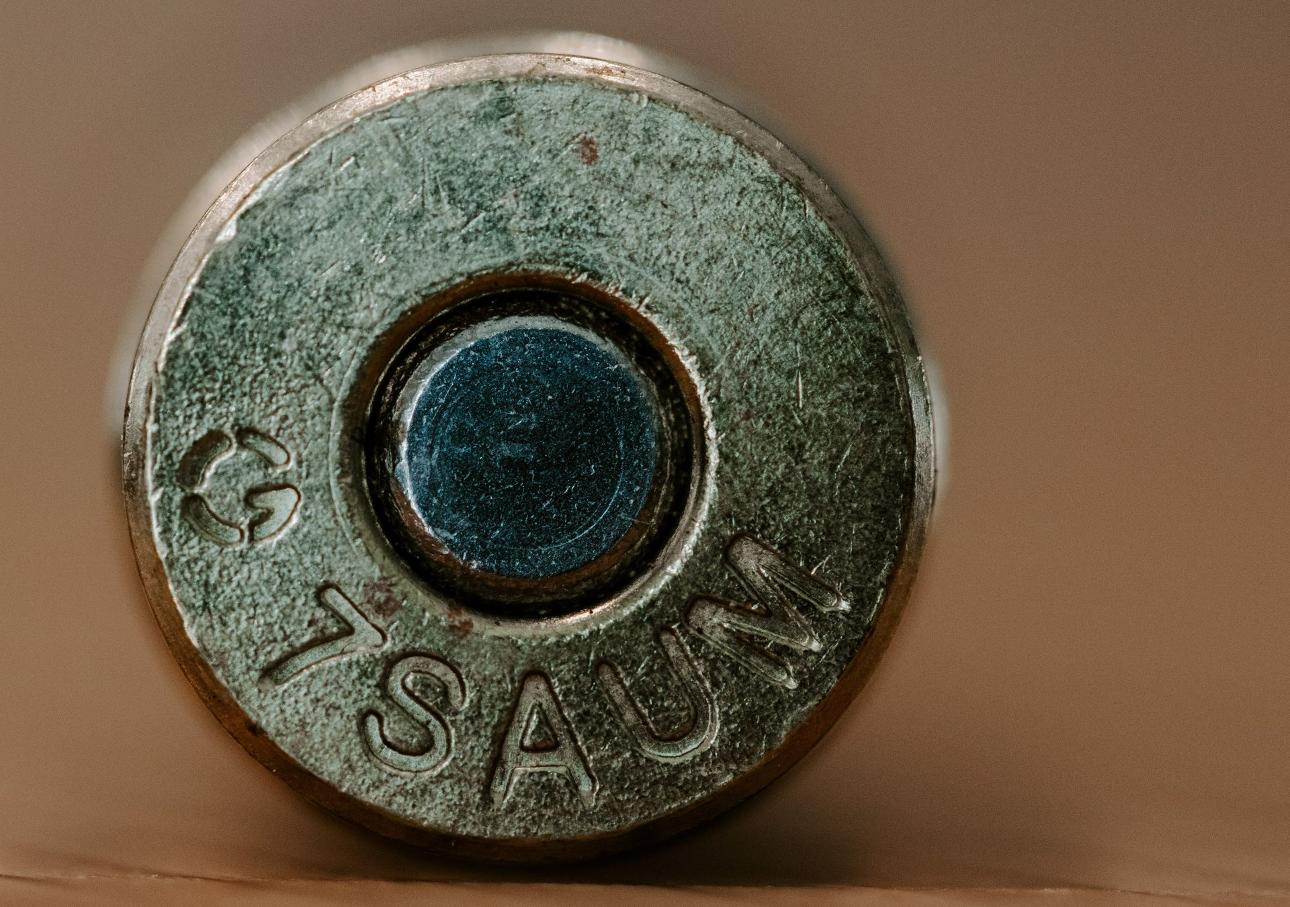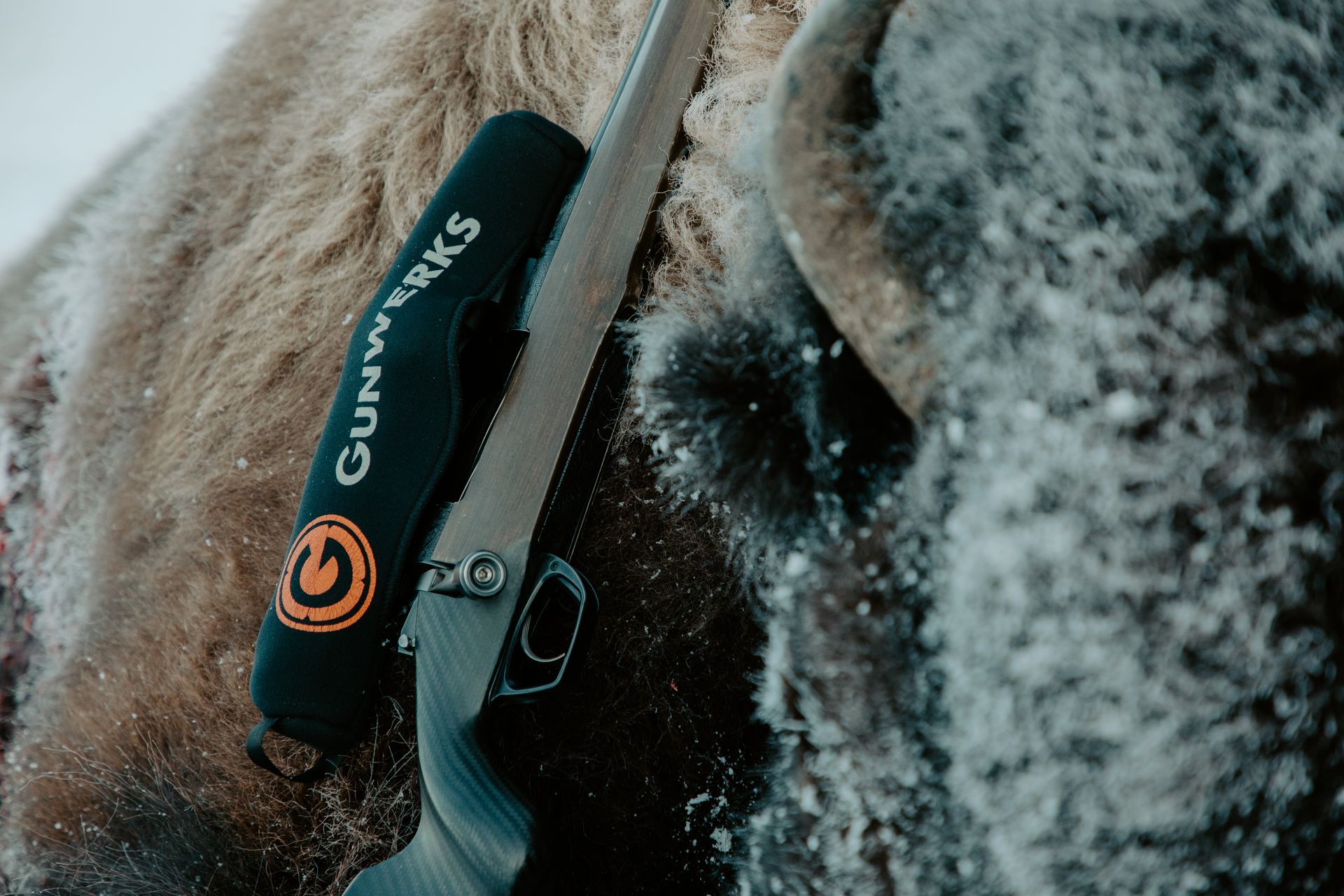Big Game Rifle Selection
Guides, outfitters and gun builders are frequently asked by hunters which rifle they should buy, build or take on a specific hunt. There are two prevailing schools of thought that you often hear over the campfire or in the truck:
Take the rifle you shoot most confidently.
You can’t kill something too dead. Take the biggest gun you have.
While each have a degree of merit, I don’t think either of these sentiments accurately addresses the question. I have supreme confidence in my ability to shoot my 6.5 Creedmoor, but I’m certainly not taking it on any hunt in Alaska. Similarly, the 28 Nosler is a fire-breathing dragon, but it’s not my go-to pronghorn rifle. I like overkill as much as the next guy, but if a smaller caliber can handily take the game I’m after, in the worst conditions I plan to encounter, I’m likely to use it.
My answer to the age-old question is, “Take the right rifle for the job,” or “That depends.” And it really does depend. If the accuracy and dependability of the rifles I’m choosing from are on an equal playing field, and I’m confident with each, there are a lot of other factors to consider. There are four factors that rise to the top; 1) weight, 2) ergonomics 3) ballistic performance and 4) terminal performance.
Weight
Selecting the right rifle for a hunt always begins with consideration given to the demands of the hunt itself, and the first questions I always ask are; how far are we traveling on foot, how much elevation gain are we likely to see, and how many days will we be in the field?
The longer, farther and higher the hunt, the more critical weight becomes. The old adage “An ounce in the morning is a pound in the evening” definitely feels true after a week in the mountains.
There are minimal downsides to a light rifle. Felt recoil will be higher with a light rifle than with a heavier rifle chambered in the same cartridge. But that’s what quality muzzle brakes and suppressors are for. Acquiring and maintaining a steady sight picture can be more difficult with a light rifle. As you weigh the advantages and drawbacks of a light rifle, know your strengths and weaknesses and choose accordingly.

Ergonomics
The “best” ergonomics of a hunting rifle will largely be determined by personal preference. I’ve found barrel length and the volume of the stock to be the most important ergonomic consideration.
Barrel length is a double-edged sword. On one hand, the shorter the barrel, the lighter and faster-pointing it tends to be. A shorter barrel also makes the firearm much easier to carry or pack in dense timber or brush, and it’ll pack more easily in every conceivable scenario.
Shorter barrels, however, are louder and they give up velocity. In very rough numbers, reducing barrel length by an inch can forfeit between 25 and 50 FPS of muzzle velocity, depending on the cartridge, powder and projectile.
I used to prefer 26” inch barrels on magnum rifles to wring every last foot of velocity out of a cartridge. I’ve since changed my tune. I prefer a 22-inch barrel, not only for maneuverability and weight, but also to reduce overall length in the event that I use a suppressor. The tradeoff is, in my opinion, worth it.
The volume of a stock, along with the shape of the rifle’s trigger-hand grip, are definitely personal decisions. Most vertical grip stocks, like the carbon fiber stock on the Gunwerks Magnus platform, tend to have more overall volume than stocks without a vertical grip, like the CLYMR platform.
High volume, vertical grip stocks are absolutely a bonus when shooting large calibers at long ranges. They’re more forgiving, more controllable when tracking an animal, and transfer less felt recoil to the shooter. Personally, I prefer high-volume stocks on any rifle chambered in an ultra-magnum class cartridge.
The next two topics are more about cartridge selection than rifle selection, but because choosing a cartridge is a huge consideration when buying a rifle, it’s a major part of the equation.

Ballistic Performance
Not to be confused with terminal performance (more on that later), ballistic performance refers to everything that happens to a bullet between the muzzle and the hide. The ballistic performance – or the ability of a projectile to overcome gravity, wind, and a number of other environmental factors – is determined largely (but not entirely) by the bullet selected and the speed at which it’s traveling.
The importance of ballistic performance should be dictated by where you’re hunting and what range you feel comfortable shooting game. The ballistic performance differences between modern hunting cartridges is almost a moot point if you don’t expect to shoot beyond 300 yards at a large animal. Environmental factors have minimal impact on any modern bottleneck cartridge within 300 yards.
I mention the location of the hunt because some places can dictate how far you’ll be shooting, and environmental factors are certainly different from place to place.
First scenario: Wyoming is one of the windiest states in the nation. As such, a hunter in Wyoming would benefit from a cartridge that is minimally susceptible to wind deflection. That requires speed and a high BC bullet. The right cartridge will have ample case capacity, yet room to accommodate a long, heavy-for-caliber projectile.
Second scenario: Dall sheep hunting is, almost without fail, conducted on the scree-covered, barren mountains of Alaska or Canada. Long shots are relatively common, due to the inability to close distance in the same day without risking detection. Fighting gravity is a lot like fighting wind; heavy-for-caliber bullets and speed help a great deal. Choose wisely.
Bullet selection aside, some cartridges simply overcome environmental factors better than others. The 7 LRM will outperform the 7mm-08 because of its ability to move a heavier bullet at an adequate velocity. Seems intuitive, right? It is, but there’s more to ballistic performance when choosing a cartridge.
Take, for example, the 300 PRC vs the 300 RUM. The RUM series of cartridges max out the length of a standard long action receiver to the point of reducing bullet selection. And that’s the strength of the 300 PRC. The 300 PRC case is shorter than that of the RUM, meaning you get almost the same powder capacity, but you can fit a much longer, heavier, higher BC bullet without creating issues like seating depth, bullet distance from the lands, feeding and so on. Fitting a 220 grain bullet into a 300 RUM case would, at the very least, reduce the space for powder in the case to the extent that you might as well be shooting a 300 PRC.

Terminal performance
Terminal performance, at least as far as hunters are concerned, is the projectile’s ability to cleanly, ethically and safely harvest a game animal as quickly as possible.
You can argue the finer points of terminal performance as it pertains to bullet selection for an eternity. While differences in the terminal performance of various bullets can’t be ignored, we’re talking about rifles (or, more specifically, cartridges) at the moment.
It’s prudent to select a rifle chambered in a round that maintains ample energy for the game you’re pursuing at your absolute maximum range. Only you can determine what your maximum range is.
Here’s a good example. As I write this, I have a valid Wyoming bison tag. In Wyoming, shot opportunities on bison usually occur within sight of the Teton or Yellowstone National Park borders, and if a mortally wounded bison crosses back onto park property, rangers may contest your right to keep the animal. For that reason, I’m using a Gunwerks SKUHL dangerous game rifle chambered in 338 Remington Ultra Mag. If hunting along a national park border wasn’t in the equation on this hunt, I’d save weight and recoil and take my CLYMR, chambered in 7 SAUM.
Choosing the 338 Ultra Mag doesn’t make it impossible for a bison to absorb a well-placed bullet and run several hundred yards. It does, however, maximize the damage that results from a single impact, and consequently reduces the likelihood of the bison running across the park border. I’d use the same “bigger is better” logic if I was hunting brown bear or hunting in areas where self-defense from big bears could be a concern. If I was hunting small pieces of public land surrounded by private ground, this same line of reasoning may impact my decision to size up on caliber.
I’d rather pack too much gun than not enough gun, but that doesn’t mean that I’ll automatically default to the largest rifle in the safe regardless of the game I’m pursuing.
In many cases, rifle selection is a process that makes hunters overthink. Consider the type of hunting you’re most likely to do with the rifle and select one accordingly. While choosing a rifle and cartridge suitable to the demands of the situation is important, it’s even more important to become proficient with the platform. Practice. The most accurate rifle in the world is useless in the hands of someone who doesn’t know how to use it effectively.

Hunt Preparation: Big Game Rifle Selection